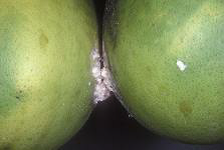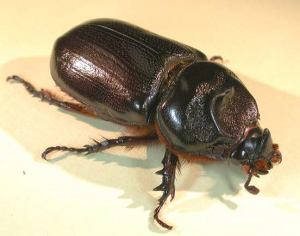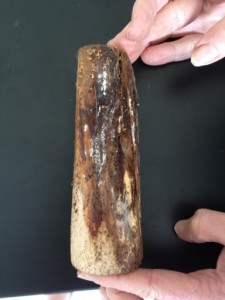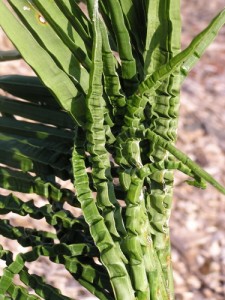Citrus Mealybug (Planococcus citri) Hosts: Annona, Arabica, and Robusta coffee, cotton, banana, carambola, cacao, flowering ginger, macadamia, mango and plants belonging to Citrus genus. Distribution: This pest has a pan tropical distribution that extends into subtropical regions. It is present in nearly all coffee growing countries. Damage: Leaves of plants attacked by the root form …
September 2013 archive
Sep 10
August 2013 Pest of the Month
Host: Coconut and Oil palms mainly – but also may attack other palm species Distribution: South Pacific (American Samoa, others) and Guam. Damage: V-shaped cuts in the fronds or holes through the midrib Control: Eliminating the places where they breed and manually destroying adults and all stages of life cycle – eggs, larvae, and pupae. …
Sep 08
July 2013 Pest of the Month
Graphiola leaf spot – Graphiola phoenicis Hosts: The primary hosts in Floridaare Phoenix species, especially Phoenix canariensis (Canary Island date palm) and Phoenix dactylifera (date palm). Distribution: Widely distributed throughout the date-palm growing world. Damage: Very small black, cup-shaped fungal bodies (sori) are present on leaf blade of the oldest leaves. This disease is primarily …
Sep 08
June 2013 Pest of the Month
Acacia Psyllid – Psylla uncatoides Hosts: Acacia koa, Acacia koaia Distribution: Originates in southeast Australia. Also found in New Zealand, California, and Hawaii. Damage: Feeds primarily on the young terminal growth. Heavy infestations can severely defoliate and kill twigs and branches. Control: A biological control, Harmonia conformis, was successfully established in Hawaii in the 1970s. …
Sep 08
May 2013 Pest of the Month
Gliocladium blight – Pink Rot of Palms Pathogen: Gliocladium vermoeseni (fungus) (recently renamed Nalanthamala vermoeseni). Hosts: Chamaedorea spp, Dypsis spp. (Areca palms, etc.), date palm, queen palm, Mexican fan palm, others. Symptoms: Invasive rot of buds, petioles, leaf blades, and trunks/stems, dark brown necrotic areas near the base of the stem, gummy exudates, premature death …
Sep 05
April 2013 Pest of the Month
Boron Deficiency Hosts: Palms Symptoms Twists or bends in the stems, failure of apical meristems to fully open and expand, and leaf wrinkling or crumpling known as “accordion leaf”. There may be chlorosis in young leaves, shortening of terminal internodes, or “scorched” leaf tips. Fruits may abort prematurely due to functional failure of pollen tubes. In certain …






